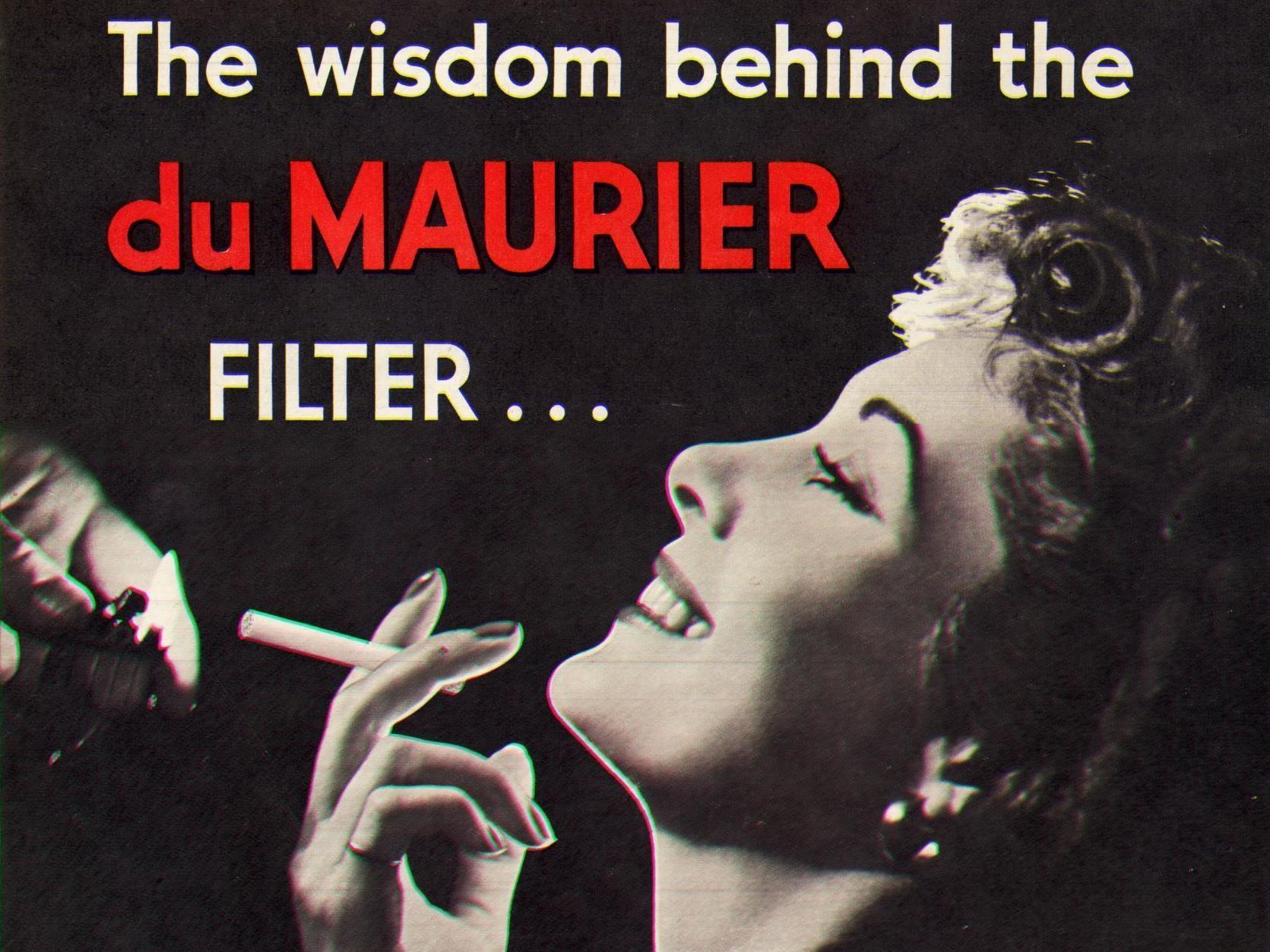How smoking adverts have evolved over the decades, from a gentleman’s pastime to a life-threatening activity
Smoking became increasingly popular during the First and Second World War

Your support helps us to tell the story
From reproductive rights to climate change to Big Tech, The Independent is on the ground when the story is developing. Whether it's investigating the financials of Elon Musk's pro-Trump PAC or producing our latest documentary, 'The A Word', which shines a light on the American women fighting for reproductive rights, we know how important it is to parse out the facts from the messaging.
At such a critical moment in US history, we need reporters on the ground. Your donation allows us to keep sending journalists to speak to both sides of the story.
The Independent is trusted by Americans across the entire political spectrum. And unlike many other quality news outlets, we choose not to lock Americans out of our reporting and analysis with paywalls. We believe quality journalism should be available to everyone, paid for by those who can afford it.
Your support makes all the difference.Society’s perception of smoking has altered drastically over the years.
Advertised as a popular pastime of gentlemen and athletes during the early 20th century, cigarette packets now come with stark warnings over the harmful impact that smoking can have on your health.
Philip Morris, one of the world’s largest cigarette and tobacco companies, has recently been accused of hypocrisy after launching a campaign with the supposed aim of helping smokers quit the habit.
Cancer charities have claimed that the company is simply using the campaign to advertise its other products, stating that a better course of action would be to cease the production of cigarettes altogether.
In the late 19th century, American craftsman James Bonsack invented the first cigarette rolling machine.
This led a huge boom in the tobacco industry, with the machine able to roll cigarettes thirteen times faster than a human being.
Smoking became a very fashionable activity in the years that followed, with adverts featured in publications such as Cosmopolitan and Bohemia depicting it as a recreation fit for a gentleman.
Take a look at the way in which smoking ads have evolved throughout history:
Similar adverts continued to proliferate throughout the decades, with a myriad of high-profile individuals, including baseball player Normal Alexis “Bub” McMillan and footballer Stanley Matthews, being used to promote the tobacco-based products.
In 1929, a German doctor called Fritz Lickint published statistical evidence connecting the act of smoking with the development of lung cancer.
Despite the scientific proof provided by Lickint that smoking cigarettes can have a significantly adverse effect on a person's wellbeing, it continued to prevail as a popular pastime throughout the subsequent decades, thanks in large part to advertising.
The popularity of smoking among soldiers during the First World War led to a huge increase in the number of documented cases of lung cancer, as stated by historian Robert N. Proctor in the International Journal of Epidemiology.
According to Proctor, there had only been 140 documented cases of lung cases worldwide prior to 1900.
However, by the 1930s, it had become the second highest cause of cancer death among men in Germany.
The Second World War also led to a huge rise in the number of smokers around the world.
By the late 1940s, eight out of 10 British men and four out of 10 British women were regular smokers, explains Nicholas Pimlott, associate professor in the Department of Family and Community Medicine at the University in Toronto.
A number of regulations have been put into place in the UK in recent years in order to prohibit tobacco companies from advertising health-damaging products.
The Tobacco Advertising and Promotion Act was established in the UK in 2002, with the majority of tobacco advertisements being banned in the country from February 2003, as outlined by Action on Smoking and Health.
A recent study conducted by researchers at Imperial College London found that the banning tobacco product displays in UK shops, which came into effect in 2015, may have reduced the number of children buying cigarettes by 17 per cent.
Join our commenting forum
Join thought-provoking conversations, follow other Independent readers and see their replies
Comments